Ontario attracts investment: New builds, M&A among the highlights of recent activity, but rising costs a concern
Ontario is a strong producer of gold, accounting for 40.5% of all gold produced in Canada in 2020. So it’s not surprising that the yellow metal figures heavily in recent construction and M&A highlights from the province.
Billions of dollars are being invested in three new Ontario gold mines that are expected to come online over the next two years – Iamgold’s Côté joint venture; Argonaut Gold’s Magino mine and Equinox Gold’s Greenstone JV. While the mines – all low-grade, open pit operations – will bring welcome jobs and tax revenue, building during the pandemic has come with challenges. Two of the three mines have already seen some serious cost inflation amid supply chain and labour issues. Here’s a look at all three.
Greenstone
Equinox Gold broke ground at its 60%-owned Greenstone gold project in Ontario with 40% partner Orion Mine Finance in late October. As the last in full-on construction (early works at the project started in early 2021), it’s the only one of Ontario’s new gold mines that hasn’t warned of rising costs.
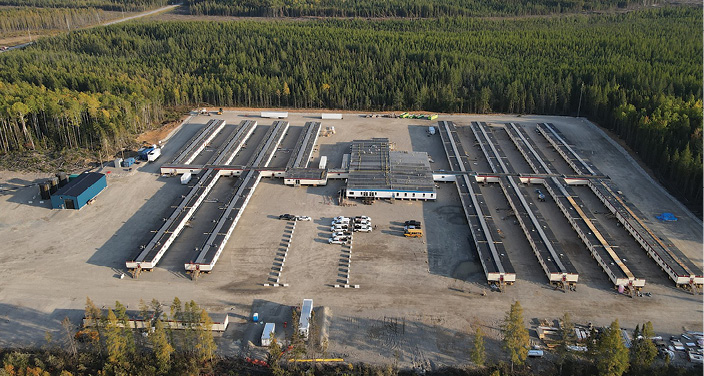
First gold at the US$1.2-billion Greenstone project, near Geraldton, 275 km northeast of Thunder Bay, is targeted for the first half of 2024. The operation will be one of Canada’s largest gold mines, delivering an average of over 400,000 oz. gold (240,000 oz. attributable to Equinox) during the first five years of its 14-year mine life. According to a late 2020 feasibility study update, the 27,000 t/d mine will produce at all-in sustaining costs (AISC) of less than US$700 per oz. The project’s after-tax net present value (NPV) at a 5% discount rate is estimated at $1.4 billion, its internal rate of return (IRR) at 20.1%, and its payback period at 3.2 years.
Just a couple of years ago, the project’s advancement was in doubt, with former 50/50 owners Premier Gold Mines and Centerra Gold at odds on moving forward with construction. Centerra claimed a feasibility study completed on Greenstone by Premier was not up to feasibility standards, while also turning down an offer by Premier to buy its interest for US$205 million.
Equinox moved in to purchase Premier Gold in December 2020, and Centerra agreed to sell its 50% stake in the project to Orion Mine Finance for US$210 million plus further contingent payments of up to US$75 million. Orion made a deal to sell 10% of its stake to Equinox once its takeover of Premier was completed, setting the stage for the project to move forward.
Proven and probable reserves are pegged at 135.3 million tonnes grading 1.27 g/t gold for 5.5 million oz.
Magino
Argonaut Gold began construction of its Magino gold project, 40 km northeast of Wawa, Ont., last January. But in December, Argonaut announced that expected construction costs had ballooned by 57% to $800 million from $510 million. In the same release, the company noted the departure of president and CEO Peter Dougherty.
The project is envisioned as a 10,000 t/d open pit project with a 17-year mine life. Its first gold pour is expected in March 2023.
From the start, Argonaut had attempted to control potential cost escalation by opting for a fixed-bid EPC contract with Ausenco for the processing plant, which accounted for 40% of the initial capex. But other costs remained unprotected. The company said that cost increases, inflation and Covid-19 impacts accounted for 32% of the capital increase; scope changes related to site development, the tailings management facility and power (choosing to install an LNG plant rather than upgrading line power) accounted for 28%; and quantities (related to site development and indirect costs) accounted for 20%. Schedule recovery accounted for an 8% rise.
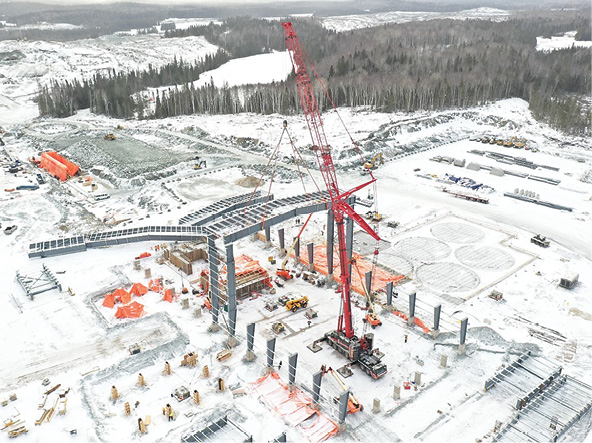
In mid-February, Argonaut released highlights of a new technical report for Magino and also announced a $45-million bought-deal financing of flow-through shares to support exploration and development at Magino.
The new report estimates capital costs at US$492 million ($626 million) including preproduction, sustaining capital and closure, and contingency costs. However, it does not consider capital invested to the end of 2021, which amounted to US$273 million ($347 million). If that spending was not treated as a sunk cost, the overall capital cost would be US$765 million ($973 million).
Argonaut now forecasts Magino’s mine life at 19 years with recovery of 2.2 million oz. gold in total, and 142,000 oz. of gold annually for its first five years. Life-of-mine all-in sustaining costs are projected at US$963 per oz. Using a US$1,600 per oz. gold price, the project now carries an after-tax net present value of US$421 million (at a 5% discount rate) and an internal rate of return of 19.3%.
In addition to the recent financing, funding for Magino will come from cash flow from other operations and about $290 million in cash and credit facilities that the company holds.
The report did not consider expansion beyond the initial 10,000 t/d project, although Magino is permitted for 35,0000 t/d and Argonaut sees potential for a staged expansion.
Proven and probable reserves now stand at 65.5 million tonnes grading 1.15 g/t gold for 2.4 million contained oz.
Iamgold
Iamgold began construction of its 70%-owned Côté gold mine near Gogama, Ont., in July 2020. The operation will be the first open pit gold mine in Canada to use autonomous haulage.
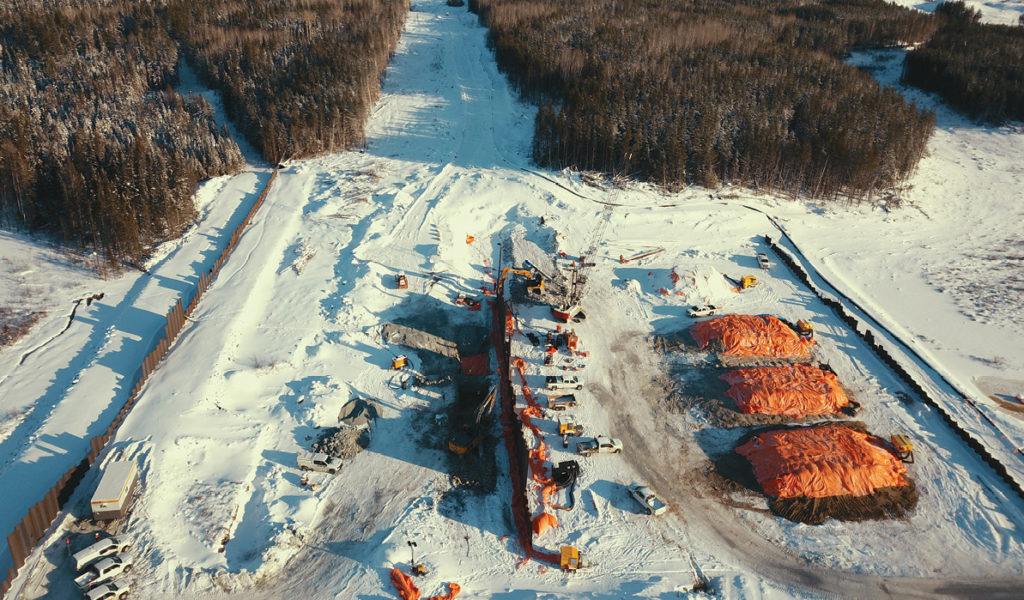
While Iamgold reports that the project is still on schedule for first production in the second half of 2023, it reported in July 2021 that costs have risen by 25-30%. The gold miner now expects its 70% share of costs to be US$1.1-$1.2 billion, compared to US$875-$925 million in the previous year’s estimate. Sumitomo Metal Mining holds a 30% stake in the JV.
Contributing to the cost increase are: higher structural, mechanical, piping, electrical and concrete estimates for the process facility; higher mine facilities costs; increases in earthworks materials and manpower estimates; certain scope changes; and inflation – including pricing increases due to Covid-19 related supply chain challenges. Currency exchange rates and other pandemic-related costs also played a part.
The 36,000 t/d operation is expected to produce an average of 489,000 oz. annually over its first five years. Production over the full 18-year mine life is estimated at 367,000 oz. annually at all-in sustaining costs of US$802 per oz. Côté holds proven and probable reserves of 233 million tonnes grading
1 g/t gold, for 7.3 million oz. (on a 100% basis). A technical report updated in 2021 gave the project an after-tax NPV of $1.6 billion (discounted at 5%), an IRR of 19% and a payback period of 3.7 years.
The project is 92.5% owned and operated by the Iamgold-Sumitomo JV, with 7.5% held by a third party.
Iamgold’s president and CEO Gord Stothart stepped down in January, followed by chairman of the board Don Charter. RCF Management, a 5.2% shareholder, is pushing for further changes to the board. Iamgold announced a strategic reviews of its Rosebel and Westwood mines in January.
Generation makes progress at Marathon
Looking further down the line, a likely candidate for the next new mine is Generation Mining’s Marathon palladium-copper project. The project is in the midst of a joint federal-provincial environmental impact assessment review. Generation recently secured a 100% interest in Marathon when Sibanye-Stillwater opted not to exercise its right to earn a 51% stake in the project. In return for its 16.5% interest, Generation issued shares to Sibanye-Stillwater, leaving the South Africa-based miner with a 19.1% holding in the junior. Generation also secured $240 million in financing to build the mine, estimated to cost $665 million. The funds come in the form of a streaming deal with Wheaton Precious Metals that will see it buy the first 150,000 oz. of payable gold production, dropping to 67% of gold production for the remainder of the mine life, and between 15% and 22% of platinum production. Wheaton will pay a portion of the spot price (between 18% and 22%).
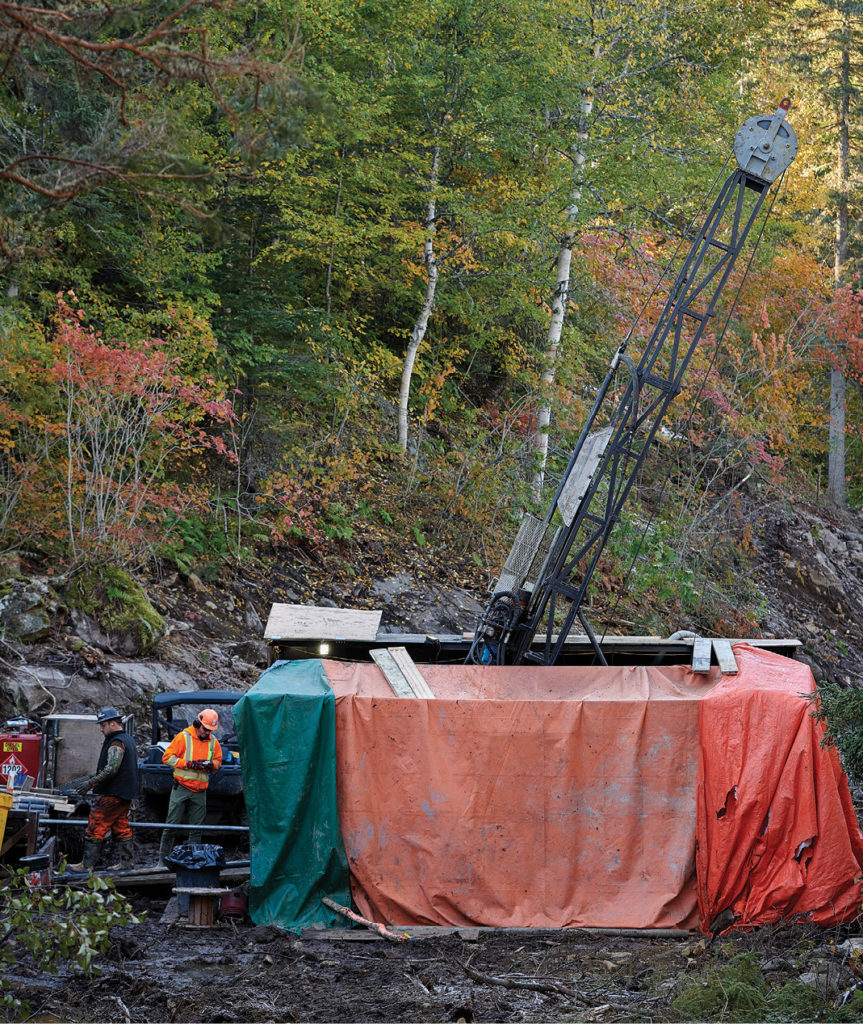
Generation is working with Endeavour Financial to source funds (including project debt, offtake agreements and equipment financing) to cover the remainder of the capital cost.
A 2021 feasibility study on Marathon outlined a 25,200 t/d open pit operation that would produce an average of 146,000 oz. palladium, 36 million lb. copper and 41,000 oz. platinum per year, plus gold and silver credits at an all-in sustaining cost of US$809 per palladium-equivalent oz.
The project’s after-tax net present value (using a 6% discount rate) is estimated at $1.1 billion with a 29.7% internal rate of return and a 2.3-year payback. The study used long-term metal prices including US$1,725 per oz. palladium and US$3.20 per lb. copper.
M&A deals highlight potential future mines
Two recent M&A deals shine the spotlight on the future potential of Ontario’s undeveloped Ring of Fire region and its established Red Lake camp: Wyloo Metals’ takeover of Noront Resources, and Kinross Gold’s takeover of Great Bear Resources. At press time in late February, both transactions were expected to close in the first quarter.
Noront Resources
Six years after Cliffs Natural Resources walked away from the Ring of Fire, seeing no way to develop a mine for decades, interest in the remote, infrastructure-poor but mineral-rich region started to pick up in 2021. A protracted bidding war for Noront Resources last year demonstrated its nickel-copper-PGM and chromite assets are attractive for at least a couple of companies with deep pockets, a far-reaching vision, and a willingness to work through divided First Nation support for development. In the competition for Noront, Aussie companies BHP and Wyloo Metals started the bidding at $325 million, or 55¢ per share (BHP) and ended at $616.9 million, or $1.10 per share (Wyloo). At press time, the shareholder vote on Wyloo’s offer was set to take place on Mar. 15. The company already has a 23% stake in Noront, acquired from Resource Capital Funds in late 2020.
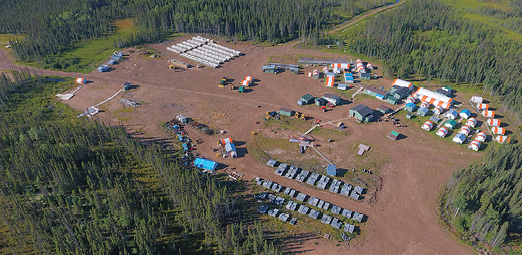
Noront’s Eagle’s Nest project, located 530 km northeast of Thunder Bay, hosts proven and probable reserves of 11.1 million tonnes grading 1.68% nickel, 0.87% copper, 0.87 g/t platinum, 3.09 g/t palladium and 0.18 g/t gold. A 2012 feasibility study pegged the mine life at 11 years. Noront had been hoping to put the high-grade underground mine into production in 2026. However, first, an all-weather road into the Ring of Fire would have to be built (see page 36 for details of road proposals in the region). The company also holds several high-grade chromite deposits, including Black Thor, which hosts measured and indicated resources of 137.7 million tonnes grading 31.5% chromite.
Wyloo, a private company owned by Australia’s Tattarang, which is controlled by mining billionaire Andrew Forrest, declined a request for an interview by CMJ until after the takeover is closed. However, last May, before even officially making an offer for Noront, it outlined some big plans for the Ring of Fire.
Wyloo’s plans for the region include the creation of a “future metals hub,” and a commitment to invest $25 million to study the potential to create a local battery metals supply chain in the province and the potential for a new ferrochrome plant.
The company also promised that the metals hub would be developed in consultation with regional stakeholders and First Nations communities. It added that it would target awarding $100 million worth of contracts to First Nations businesses; pledged to help First Nations businesses with access to capital and other support to create other employment and economic opportunities; and proposed the development of a training and employment centre for northern Ontario and First Nations communities.
Even so, it will have some work to do to get First Nations support: in April 2021, several communities in the region declared a moratorium on development in the Ring of Fire, and are demanding a
First Nations-led regional assessment (see page 36).
Great Bear Resources
While Great Bear Resources has yet to release an initial resource for its Dixie project in Red Lake, Ont., it’s been evident for a while now that it has its hands on a substantial discovery. Kinross, which made a friendly $1.8-billion cash-and-shares offer for the junior in December, says it’s been doing due diligence on the asset since 2018. The deal was approved by Great Bear shareholders in mid-February.
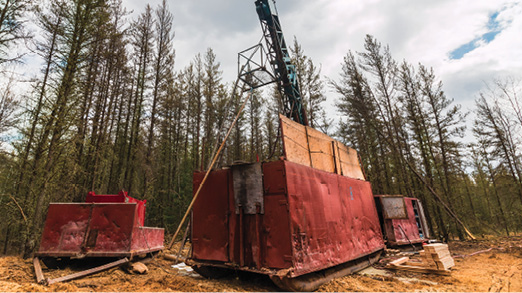
Even without a National Instrument 43-101 resource estimate, a massive drilling campaign at Dixie – more than 790 holes totalling 340 km completed to date – has provided plenty of high-quality data for Kinross and others to draw up their own estimates. The consensus estimate among mining analysts (not National Instrument 43-101-compliant estimate) is that the deposit could host 8.5 million oz. of gold.
While the deposit is at an early stage for a nearly $2-billion payout, Kinross says it’s confident its offer is justified by its vision of a high-quality open pit mine at the project’s LP Fault zone alone, even before consideration of Great Bear’s other discoveries. Ultimately, Kinross sees a multi-decade mine complex at Dixie, starting with open pit mining at LP, which also has potential for underground mining (mineralization at LP has been intersected to 750 metres depth and remains open). There’s also potential to mine other satellite deposits at Dixie.
Work at the 91-sq.-km project has centred on the 10.8-km-long LP Fault zone, which has returned consistently impressive high-grade gold intersections within wide, continuous, moderate-grade zones of mineralization. The Hemlo-style mineralization, which occurs in stacked moderate and high-grade gold mineralized lenses, is more continuous than typical Red Lake style vein-hosted gold deposits. Drill results in the Central LP Fault zone have included 101.5 metres of 4.69 g/t gold (from 92 metres), including 5.3 metres of 41.25 g/t gold (hole BR-212).
While the market had been looking forward to the release of an initial resource for the LP Fault in early 2022 under Great Bear, Kinross plans to delay that for about a year as it conducts more infill drilling on the deposit. The planned drilling will focus on delineating a 350- to 400-metre-deep starter pit at LP along the 2-km-long Central. A preliminary economic assessment would follow in early 2023. Assuming another 2.5 years for a prefeasibility and feasibility and two years of construction, it’s possible the mine could be in production by the end of the decade, Kinross executives said in a December 2021 conference call. Kinross is planning 200,000 metres of drilling at LP in 2022, plus exploration drilling at other high-grade Red Lake-style deposits at Dixie. The company plans to spend $50-60 million on the 2022 drill campaign.


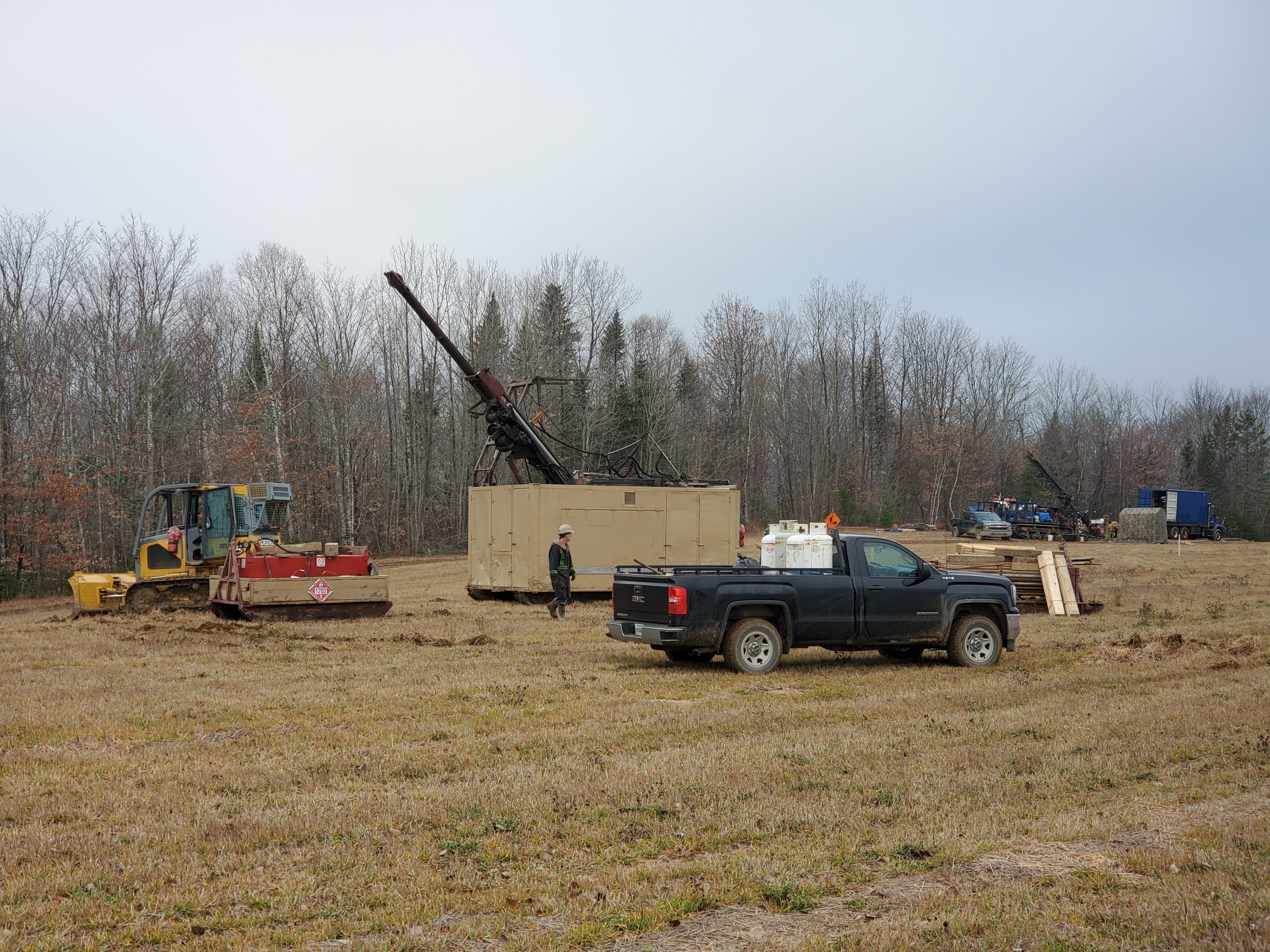

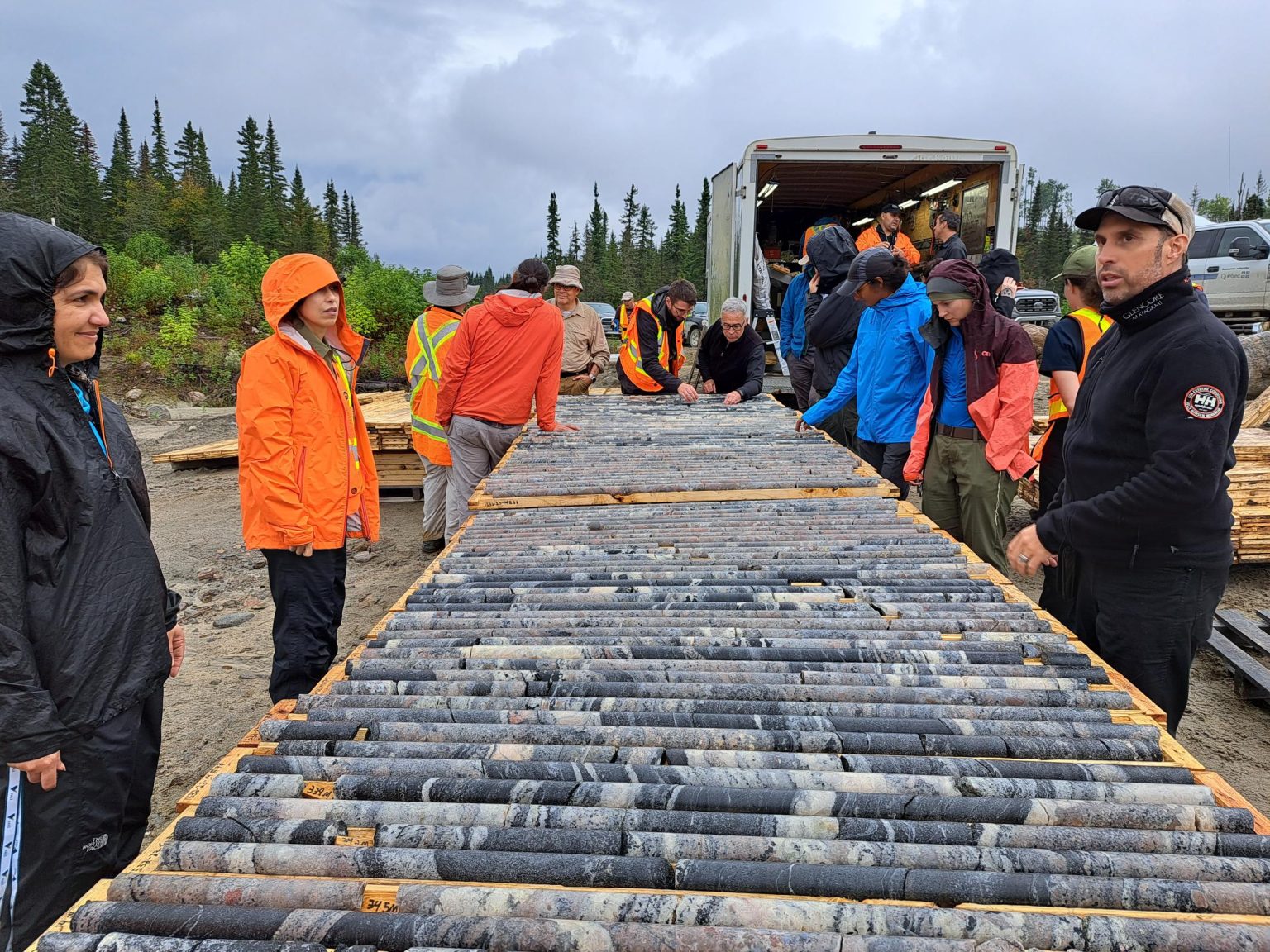
Comments